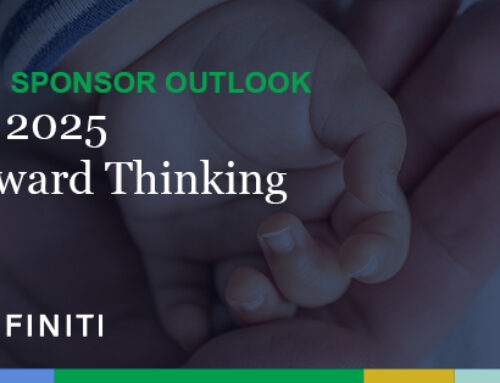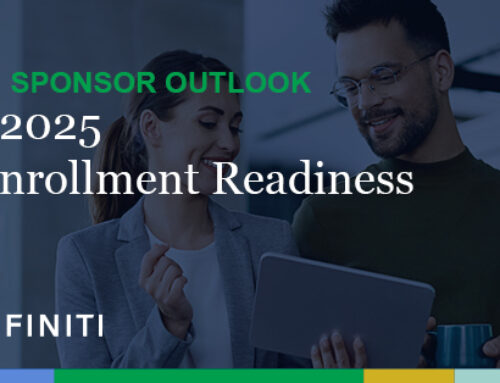
Guiding Light
Five Strategies To Support Employees During Times of Market Volatility
Market volatility can cause employees to feel uneasy about their retirement savings, often leading to impulsive decisions that could harm their financial future. As a plan sponsor, it’s crucial to take proactive steps to guide employees during uncertain times. Consider the following five strategies:
1. Provide Clear and Consistent Communication.
During periods of market turbulence, silence can fuel anxiety. Keep employees informed through regular communications that address current market conditions, potential impacts on retirement accounts, and the importance of staying the course. Utilize newsletters, webinars, and email updates to maintain transparency.
2. Emphasize a Long-Term Perspective.
Encourage employees to focus on long-term investment goals rather than short-term market fluctuations. Offer educational resources that explain the benefits of dollar-cost averaging and maintaining a diversified portfolio. Reinforce that historically, the market has recovered from downturns, rewarding those who stay invested.
3. Offer Financial Wellness Programs.
Financial stress can negatively impact employee productivity. Implementing financial wellness programs can empower employees to make informed decisions. Partner with financial advisors to host workshops or one-on-one consultations to address individual concerns.
4. Encourage Diversification and Risk Assessment.
Educate employees on the importance of diversification as a risk management strategy. Provide tools and resources that help them assess their risk tolerance and adjust allocations if necessary. Make it clear that diversification doesn’t eliminate risk but helps manage it more effectively.
5. Make Use of Digital Tools and Platforms.
Leverage digital platforms that offer personalized insights and projections. This information allows employees to see potential long-term outcomes of their current investment strategies, which can reduce panic-driven reactions.
Educating employees during market volatility is essential to maintaining confidence and promoting sound financial decision-making. Your plan advisor can help you craft an effective and consistent communication plan. By connecting with your employees proactively, emphasizing a long-term perspective and providing practical resources, plan sponsors can guide employees through uncertain times while helping them stay focused on their retirement goals.
Informational Resources: Kiplinger: “Five Ways to Safeguard Your Portfolio in Market Downturns” (March 12, 2025); PLANSPONSOR: “How Should Plan Sponsors Communicate When the Market Plunges?” (August 5, 2024).

Measuring Up
Best Practices for Plan Benchmarking
Ensuring a competitive and well-managed retirement plan is essential for attracting and retaining employees while maintaining fiduciary compliance. Benchmarking your retirement plan helps assess its effectiveness and identify areas for improvement. The following are key best practices for plan sponsors.

Passess Fees and Expenses.
Understanding the costs associated with your retirement plan is crucial. Compare investment management fees, recordkeeping costs and administrative expenses to industry standards. Excessive fees can erode participant savings, so seek cost-efficient solutions without sacrificing quality.
Evaluate Investment Performance.
Regularly review fund performance against relevant benchmarks and peer groups. Ensure the investment lineup remains diversified, aligns with participant needs and meets the long-term objectives of the plan.
Analyze Participation and Contribution Rates.
Monitor enrollment trends, deferral rates and employer matching contributions. Low participation may indicate the need for enhanced education, auto-enrollment or increased employer incentives.
Compare Plan Features.
Assess plan design elements such as vesting schedules, loan provisions and Roth options. Ensure your offerings align with industry trends and best support employee retirement readiness.
Review Service Provider Performance.
Evaluate the quality and responsiveness of plan administrators, recordkeepers and advisors. Conduct periodic due diligence to ensure you receive competitive services and pricing.
Stay Compliant With Regulatory Changes.
Retirement plan laws and regulations evolve frequently. Conduct regular compliance reviews and consult with legal or financial professionals to mitigate risks.
Gather Employee Feedback.
Survey employees to understand their retirement planning needs. Tailoring education and communication efforts can enhance their plan engagement and help improve retirement outcomes.
By implementing these best practices, plan sponsors can enhance plan efficiency, improve participant outcomes and fulfill their fiduciary responsibilities. Regular benchmarking ensures your retirement plan remains competitive, compliant and aligned with both employer and employee goals.
Informational Sources: SoFi: “What Is 401(k) Plan Benchmarking?” (March 12, 2024); 401k TV: “Annual Benchmarking Is a Must for Plan Sponsors” (October 3, 2024).
Web Resources for Plan Sponsors
Internal Revenue Service, Retirement Plans
www.irs.gov/ep
401(k) Help Center
www.401khelpcenter.com
PLANSPONSOR Magazine
www.plansponsor.com
BenefitsLink
www.benefitslink.com
Plan Sponsor Council of America
www.psca.org
Employee Benefit Research Institute
www.ebri.org
U.S. Department of Labor, Employee Benefits Security Administration
www.dol.gov/ebsa
Plan Sponsors Ask…
Q: We are interested in any data you have regarding employees who take loans from their account. Specifically, do they tend to stop or reduce their
current contributions while paying back the loan?
A: According to Principal’s recent research report, “401(k) Loans: Debunking the Myths,” participants borrowing from their account continue to save for retirement while paying back their loan. A strong majority, 83%, continued contributing to their retirement account at the same deferral rate as before taking the loan, whereas only 4% stopped deferring. The survey cites this as a strong indication that many participants can manage their short-term financial needs while keeping their long-term retirement goals.
Q: Is there any industry information available on employee utilization of hardship withdrawal provisions?
A: The International Foundation’s 2024 Employee Benefits Survey found that utilization of hardship withdrawal provisions averaged 5.6% of participants for 401(k) plans, 4.9% for Roth 401(k) plans and 2.3% for 403(b) plans. In addition, a preview of Vanguard’s How America Saves 2025 report showed that 4.8% of participants used hardship withdrawals when offered in 2024, up from 3.6% in 2023 and 2.8% in 2022. The increase in hardship withdrawals was particularly notable in the second half of 2024, largely due to natural disaster declarations that enable participants to take out money to repair homes following natural disasters.
Q: Can you provide information on plan adoption of an employee match on student loan payments?
A: The Plan Sponsor Council of America (PSCA) has been tracking interest in the optional SECURE 2.0 Act provisions, reporting on what plan sponsors are adopting, and what they are waiting on for now. Although the student loan employee match provision is the one that may have generated the most media attention, plan sponsor interest in adoption has been minimal and seems to be waning. PSCA survey data shows that plan sponsors who responded “yes, have or will implement this year” dropped to 2.6% in 2025, down from 4.7% in 2024. Those that responded “no, will not add the provision” rose to nearly 75%, up from 64% in 2024.
Pension Plan Limits for 2025
401(k) Maximum Elective Deferral
($31,000 for those age 50 or older, $34,750 for those age 60-63 — if plan permits)*
$23,500
Defined Contribution Maximum Annual Addition
$70,000
Highly Compensated Employee Threshold
$160,000
Annual Compensation Limit
$350,000
* Under a change made in SECURE ACT 2.0, a higher catch-up contribution limit applies for employees aged 60-63. For 2025, this higher catch-up contribution limit is $11,250 instead of $7,500, for a potential total contribution of $34,750.

Plan Sponsor’s Quarterly Calendar
Consult your plan’s financial, legal or tax advisor regarding these and other items that may apply to your plan.
JULY
Conduct a review of second quarter payroll and plan deposit dates to ensure compliance with the U.S. Department of Labor’s rules regarding timely deposit of participant contributions and loan repayments.
Verify that employees who became eligible for the plan between April 1 and June 30 received and returned an enrollment form. Follow up on forms that were not returned.
Ensure that the plan’s Form 5500 is submitted by July 31, unless an extension of time to file applies (calendar-year plans).
AUGUST
Begin preparing for the distribution of the plan’s Summary Annual Report to participants and beneficiaries by September 30, unless a Form 5500 extension of time to file applies (calendar-year plans).
Provide a quarterly benefit/disclosure statement and statement of fees and expenses that were charged to individual accounts to participants (due 45 days after the end of the quarter).
Submit employee census and payroll data to the plan’s recordkeeper for midyear compliance testing (calendar-
year plans).
Confirm that participants who terminated employment between January 1 and June 30 elected a distribution option for their plan account balance and returned their election form. Contact those whose forms were not received.
SEPTEMBER
Begin preparing the applicable safe harbor notices to employees and plan for distributing the notices between October 2 and December 2 (calendar-year plans).
Distribute the plan’s Summary Annual Report by September 30 to participants and beneficiaries, unless an extension of time to file Form 5500 applies (calendar-year plans).
Send a reminder memo or email to all employees to encourage them to review and update, if necessary, their beneficiary designations for all benefit plans.
Kmotion, Inc., 12336 SE Scherrer Street, Happy Valley, OR 97086; 877-306-5055; www.kmotion.com
©2025 Kmotion, Inc. This newsletter is a publication of Kmotion, Inc., whose role is solely that of publisher. The articles and opinions in this publication are for general information only and are not intended to provide tax or legal advice or recommendations for any particular situation or type of retirement plan. Nothing in this publication should be construed as legal or tax guidance, nor as the sole authority on any regulation, law, or ruling as it applies to a specific plan or situation. Plan sponsors should always consult the plan’s legal counsel or tax advisor for advice regarding plan-specific issues.
This material is intended to provide general financial education and is not written or intended as tax or legal advice and may not be relied upon for purposes of avoiding any Federal tax penalties. Individuals are encouraged to seek advice from their own tax or legal counsel. Individuals involved in the estate planning process should work with an estate planning team, including their own personal legal or tax counsel.



